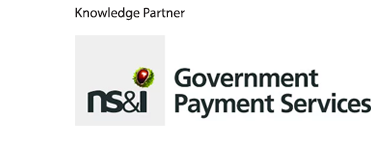Beyond budget cuts: Experts discuss strategies for boosting government productivity while protecting services

Governments globally are working to manage funding to maintain financial stability at a challenging economic time. On a recent Global Government Forum webinar, experts from the United Kingdom and the European Commission discussed strategies to mitigate budget pressures.
The demand for public services is ever-growing as financial stress impacts not just governments, but their constituents. Increased productivity in the public sector is crucial to developing the necessary services and programmes to foster country-wide growth.
While short-term solutions can create short-term change, long-term sustainability relies on policies and programmes that emphasise systematic, continuous progress.

At the beginning of March, UK Chancellor Jeremy Hunt announced a new plan for an £800 million investment targeted at delivering £1.8 billion in productivity benefits by 2029.
The plan recognises “the importance of investment, and productivity growth does require investment and does require additional funding,” said Bart van Ark, professor of productivity studies for the Alliance Manchester Business School at the University of Manchester and managing director of The Productivity Institute. “You cannot just look for waste and for slack – although there’s probably some of that in any kind of organisation.”
Van Ark also emphasised the additional £3.4 billion that the Chancellor allocated for National Health Service digitisation, saying it recognises “the importance of technology – there is absolutely scope for technological improvements in the public sector. And I think that recognition really matters.”
AI and productivity
The need to develop digital platforms to automate repetitive tasks and avoid errors was echoed throughout the discussion on productivity.
According to Mark Gibbison, VP of global public sector at Unit4: “Productivity gains are only going to be made by holistic digital transformation within organisations.”
Unit4 aims to strengthen public and private sector strategy through data sharing and identifying best practices. “It’s about using machine learning, collaborative solutions, and combining that with automated intelligence to actually become a lot more predictive about the type of repetitive work that public sector users are actually going to have to do,” said Gibbison.

Van Ark believes that AI applications have the capacity to create more flexibility in governments, allowing for more efficient allocation of resources, rather than being a replacement for the human workforce.
Analytics and technology can also support better budgeting and risk management.
“We’ve got to ensure the fiscal stability within our public sector organisations, and the only way we can do that is to have really strong financial analytical solutions in place that allow you to plan, re-budget, model for change, model your ‘what if?’ scenarios, and build lots and lots of different financial modelling scenarios, so that you’re actually ready for the next impact, the next big thing,” explained Gibbison.
It is crucial for governments to apply innovative strategies to budgetary decision-making, he added: “We cannot continue just slicing the budgets, dipping into our reserves, cutting services, taking stuff out. I think those days have gone.”
Chain reaction
Likening the public sector organisation to a delivery chain, van Ark believes that focusing on a system of budgets, inputs, outputs and outcomes allows for governments to find instances where productivity gains may be possible.
“You can get productivity gains from better procurement; you can get productivity gains from applying technology… But you can also increase the effectiveness of your public services by making better use of the information you get from citizens and from customers,” he said.
Panellists pinpointed data collection and analysis as a major productivity roadblock, particularly when data is not used consistently and effectively. “There’s a very large gap between what is being collected in management of public sector organisations in terms of data, what’s being used in auditing, and what’s then being used in national statistics,” van Ark said.
He added that lessons could be learned from healthcare and education, where productivity tends to be measured better: “In the UK, we now measure healthcare output by activities; we adjust them for quality improvements. Whereas in many other public service sectors, we tend to still make a sort of input and output assumption. And then of course, by definition, you don’t have much productivity growth.”
This can be frustrating for public sector leaders as if productivity improvements are noticeable internally but not reflected in national statistics, it draws into question the validity of the plan itself.
“In the public sector, it’s quite often we’re not very clear about the purpose of public sector improvements,” van Ark continued. While governments make it clear that productivity improvements involve managing costs, waste and slack in the system, they don’t recognise how much these developments can impact the general economy.
Christian Weise, head of unit of the National Fiscal Frameworks and Institutions and directorate-general for economic and financial affairs for the European Commission, shares this sentiment and expressed the need for comprehensive interrelationships between sectors.
He said: “If you have a decent education policy, the kids also learn about food and how to eat, for example, they might end up healthier.”

This in turn makes it a health policy issue rooted in education policy, and thus, a holistic approach is key to the productivity of government across departments.
“If you want to achieve anything, you need really comprehensive coverage. You need coordination between the different actors over the different ministries,” said Weise. “You need strong central steering. I know many people don’t like to hear that, but you need somebody who really runs the ship, often the Ministry of Finance.”
Incentivising and promoting collaboration can help improve efficiencies across sectors. “Just think of a productive infrastructure sector, a productive healthcare sector, a productive education system,” said van Ark. “All these things will help the productivity of the private sector enormously and that should definitely be part of the equation.”
Budget transparency
The panellists also discussed the need for transparency with the general public around budgetary decisions.
An amendment to the Stability and Growth Pact in 2011 obligated EU member states to create independent institutions, such as the UK Office of Budget Responsibility, tasked with improving the quality of public debate on fiscal policy.
“What we see overall is that in general, if there’s trust in a society, and also trust between citizens and the state, the authority, then you have more rational discussions and can easier achieve a compromise,” said Weise.
Beyond direct public involvement, van Ark sees value in entrusting civil servants to represent constituents in the budgeting process.
Read more: AI key to ‘transform productivity’ of the civil service, says UK’s deputy PM
To strategically think about the implications of public service adjustments requires “management competencies” that long-term employment provides, according to van Ark. However, the frequent use of job rotation strategies could prevent civil servants gaining the experience necessary to understand and advocate on behalf of citizens.
While he acknowledges the benefits of job rotation and believes the technique has its place in the workforce, van Ark believes a cookie-cutter approach should be avoided. Instead, he says that departments should adopt a more flexible approach in which higher-level management can strategically assess the benefits of rotation on a case-by-case basis.
Gibbison added while there can be downsides, the benefits of job rotation make it worthwhile, including the spread of codified knowledge. He said: “Moving is good because if people develop those skills and move to other organisations, it’s bringing those other organisations up as well. And what we need to do is make sure we’ve got really strong succession planning processes in place within all of our organisations so that we don’t have single points of failure.
“So, when people walk out the door, your finance system isn’t unsupportable anymore because nobody else knows how to use it.”
It all comes back to the use of technology and having long-term, sustainable systems in place to not just combat issues, but prevent them.
“Understanding how these outcomes are impacting on people, understanding what it does to them, and then having the flexibility in organisations to make the change is very, very, very important,” said van Ark. “Technology gives us a lot of opportunities to get that information, to process it significantly better.
“And I think that is creating the kind of flexibility and response in organisations that citizens really expect from our public services.”
Watch the full webinar to learn more about:
- The use of automation and AI technologies to improve processes
- How cultural shifts can increase collaboration and data management
- Using risk management to optimise public spending and ensure long-term stability




















